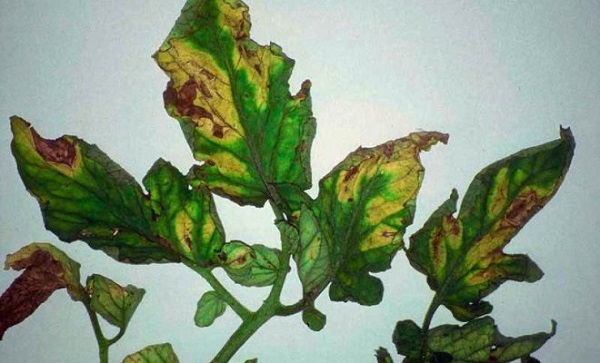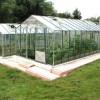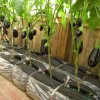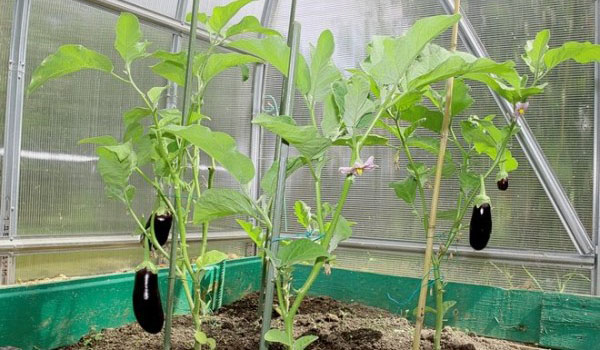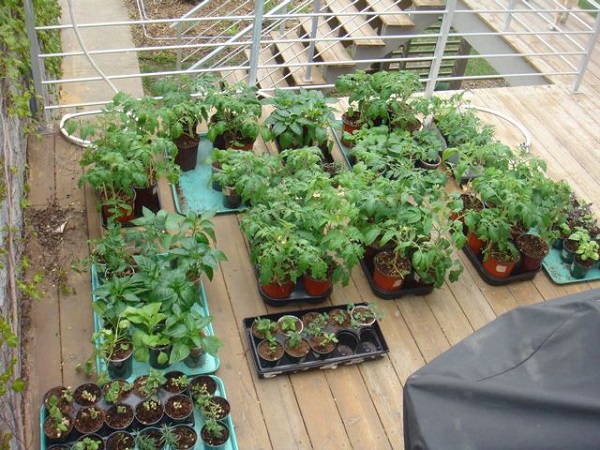Why do eggplant leaves wither in a greenhouse?
Content
Causes of wilting
Growing up in a greenhouse, eggplants are practically not exposed to negative external conditions, such as strong wind, hail, heavy rain, scorching sun, birds and most insects. However, there are many dangers affecting the appearance of the plant and inside the greenhouse.
First of all, the leaves can wither due to too high a temperature in the greenhouse. Despite the fact that eggplant is a thermophilic culture, an increase in temperature above 30 ° C negatively affects the functioning of the plant. Dry hot air causes the leaf plates to first wither and then die off.
Lack of moisture in the soil is another reason for this behavior in eggplant. In order for all vegetative processes to work as expected, the vegetable needs regular watering with warm water. Without saturating it with moisture, nutrients and liquid are concentrated in the stems, roots and inflorescences.
An acute shortage of nitrogen fertilizers leads to the fact that the eggplant leaves are depleted, do not receive the necessary complex of trace elements to maintain a healthy shape. Nitrogen acts as a stimulant and regulator of the adequate distribution of nutrients in any plant, therefore, its deficiency disrupts the working scheme of eggplant development.
Leaf wilting should not be ruled out as a consequence of plant transplantation. Since the growing conditions in pots in your home and in the soil in the greenhouse are different, the plant must go through a period of adaptation and acclimatization. After the eggplant has taken root in the new soil, the leaves will return to their bouncy and green color.
Also, the composition of the soil can become the cause of wilting. Eggplants grow well in crumbly soil with a high content of mineral and organic fertilizers. At the same time, they do not take root very well in the beds where tomatoes, potatoes, and peppers had grown before.
Eggplant leaves can wither with fusarium wilt disease. It is quite common in greenhouse plants. The fungal microflora parasitizes on the supra-root zones of the eggplant, affecting all parts. It is transmitted through contaminated soil, seeds from diseased plants, and is also stored in plant debris if you have not removed them from the beds.
Video "10 Commandments for Growing Eggplant"
How to successfully grow eggplant is discussed in this video.
Troubleshooting methods
What to do, the eggplant leaves wither? First of all, try to identify the cause or their complex, which in this way harm the plant. At high air temperatures, regular ventilation in the greenhouse should be carried out in order to naturally lower it. To enhance the effect, you can put containers with cold water around the perimeter of the greenhouse. As the water evaporates, the air will cool and also humidify, which will undoubtedly have a positive effect on the growth of the eggplant.
Insufficient watering and the use of cold water as the cause of wilting of leaves requires a complete change in the gardener's habits. When planting a culture that loves abundant moisture, care should be taken that the earth does not dry out.As for the temperature of the water, then focus primarily on the temperature of the earth. A significant difference in temperatures leads to the development of fungal microflora, provoking diseases such as powdery mildew, downy mildew, anthracnose, copperhead, root and gray rot. At the same time, great damage is caused to the root system of the eggplant, it can begin to rot. Remember - the water temperature should be equal to or slightly higher than the temperature of the ground in the greenhouse.
When growing absolutely any crops in a greenhouse, keep an eye on the composition of the fertilizers that are in the soil. Since mineral and organic materials make up the lion's share of healthy eggplant growth, a lack of them can have dire consequences. In the case of a nitrogen deficiency, it is important to carry out foliar or root feeding. Mix 3 tbsp. tablespoons of superphosphate, 1 teaspoon of ammonium nitrate and potassium sulfate in 10 liters of water. After that, water the plants in the greenhouse, at the rate - no more than 1 liter of liquid fertilizer under one bush.
Be sure to follow the crop rotation: do not plant eggplants twice in the same place or after potatoes, tomatoes, peppers. The best predecessors of eggplant are cabbage and cucumbers. If you missed this point, then carry out foliar feeding of plants with organic fertilizers: chicken manure extract, boric acid, yeast solution.
With the development of fungal diseases, it is necessary to treat all plants in the greenhouse with fungicidal preparations, for example, Topsin-M, Trichodermin, Fitosporin, etc. Depending on the type of disease, auxiliary treatment methods differ. So, with fusarium, late blight, it is important to remove all weeds, infected leaves and shoots, and then treat the plant with chemicals and onion peel infusion. For different types of rot (gray, white, root) - remove the damaged parts of the eggplant, treat the plants with Horus, Antracol. In any case, it is important to monitor soil moisture, normal access to light and fertilizers.
As folk remedies to combat fungal diseases, they use:
- Infusion of onion peels: 0.5 liters of onion peels are infused in 3 liters of hot water for 2-3 days. The resulting infusion is filtered before use.
- Infusion of garlic: 3 heads of garlic are ground into gruel, poured with 2 liters of hot water, insisted for 8-12 hours. Strain before use, dilute 1: 3.
- Milk whey: 1 liter of sour milk is diluted with 1 liter of water, infused for 12-14 hours. Strain before use, add 1-2 tablespoons of liquid soap.
- Yeast solution: 10 g of dry yeast is dissolved in 10 liters of warm water, infused for 2 days. Dilute 1:10 before use. You can also use 100 g of live yeast diluted in 10 liters of water, the solution is infused for 1-2 days, then filtered. Suitable for both foliar feeding and for spraying plants.
Video "Growing eggplants in a greenhouse"
How to grow eggplants in a greenhouse is discussed in detail in this video.

